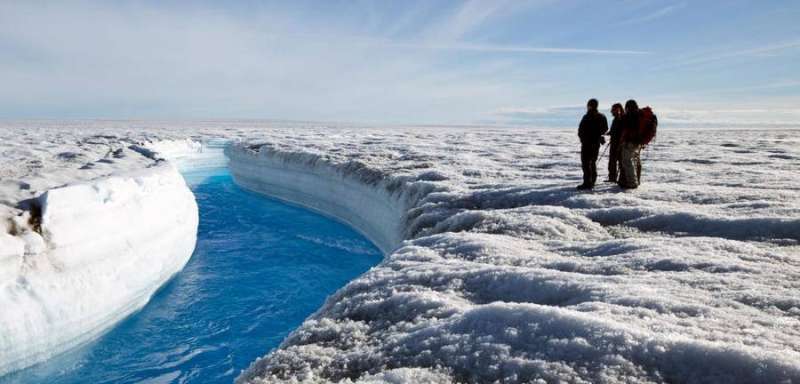Scientists have discovered DNA from animals, plants and microbes dating back nearly 2 million years, the oldest ever recorded, in sediments at the northernmost point of Greenland mined around the mouth of a fjord in the Arctic Ocean, revealing a fascinating lost world in this faraway place.
On Wednesday, researchers announced the discovery of fragments of DNA from a group of animals, including mastodons, reindeer, hares, lemmings and geese, as well as plants including poplar and birch trees and thuja, and microorganisms including bacteria and fungi, reports a local Arabic daily quoting Reuters.
DNA is a self-replicating material that carries genetic information in living organisms. Mastodon was a close relative of elephants and roamed North and Central America until its extinction along with many other large mammals in the Pleistocene nearly 10,000 years ago. The discovery shows that it lived in a much wider range than previously thought.
“The mastodon was a big surprise,” said Eski Flislev, director of the Landbeck Foundation Geogenetics Center and lead of the study published in the journal Nature. It has never been found in Greenland before. The biggest surprise was this unique ecosystem of arctic and temperate weather types mixed together without a counterpart in modern times.
“I don’t think anyone would have expected Greenland to maintain this diversity of flora and fauna two million years ago at a time when the climate was very similar to what we expect to see in a few years’ time because of global warming,” added Fleslev, who works at the universities of Cambridge and Copenhagen.
Although ancient DNA is highly perishable, the study showed that under the right conditions, in this case permafrost, it could survive much longer than previously thought. Now, Fleslev said, he wouldn’t be surprised if DNA dating back at least four million years was found.
The researchers extracted DNA from 41 samples of organic-rich sediment from five sites on the Berryland Peninsula, and identified more than 100 species of animals and plants. The samples were first extracted in 2006, but previous efforts to detect the DNA have been unsuccessful.
The methods used to extract it have evolved since then, eventually allowing for this massive discovery.
Fleslev explained that the fragmented DNA could not be used to revive extinct species, as in the “Jurassic Park” books and films “Jurassic Park”, but it may reveal secrets about ways for plants to become more resilient to global warming.

